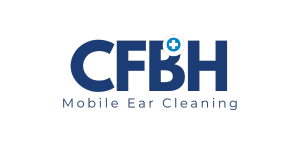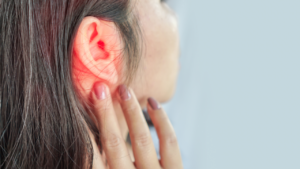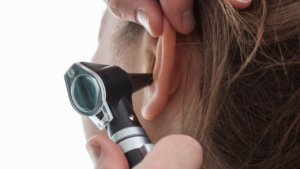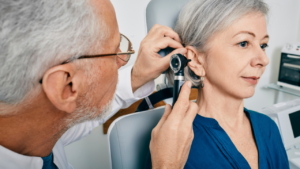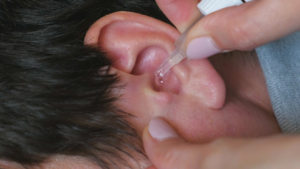
Earwax is a natural substance produced by our bodies to protect the ear canal from dust, bacteria, and other foreign particles. But what happens when earwax builds up and causes discomfort? Many people turn to ear cleaning methods to alleviate the issue.There are risks involved in having your ears cleaned, including potential damage to the delicate ear canal. In this article, we will explore the different methods of ear cleaning, the necessity of ear cleaning, and how to safely clean your ears at home.
Key Takeaways:
- Ear cleaning is the process of removing excess earwax from the ear canal.
- While some believe ear cleaning is necessary, it can actually be harmful and increase the risk of ear infections and damage to the ear canal.
- Using improper methods, such as cotton swabs and ear candling, can lead to serious complications and should be avoided.
What Are Earwax and Ear Cleaning?
Earwax, also known as cerumen, is a natural substance produced by glands in the ear canal to protect and lubricate the ear. Ear cleaning involves the removal of excess earwax and debris from the ear canal.
Earwax is crucial for ear health as it acts as a protective barrier, preventing dust, dirt, and bacteria from entering the ear canal. It also helps in moisturising the ear canal, preventing dryness and itchiness. Excessive buildup of earwax can lead to blockages, affecting hearing and potentially causing discomfort. Proper ear hygiene is essential to ensure that earwax is maintained at an optimal level.
To remove excess earwax, various methods can be employed, including ear irrigation, ear drops, and manual removal by a healthcare professional. It is important to avoid using cotton buds or other objects that can push the wax deeper into the ear canal, risking injury.
What Is Earwax Made Of?
Earwax, scientifically known as cerumen, is composed of a mixture of secretions from ceruminous glands in the ear canal and desquamated skin cells.
This fascinating substance contains various components that play crucial roles in maintaining ear health. Lipids found in earwax help prevent the ear canal from drying out and protect against infections. Proteins present in the composition contribute to the overall consistency and viscosity of the cerumen. The presence of keratin, a fibrous structural protein, gives earwax its characteristic colour and texture.
Why Do We Need Earwax?
Earwax plays a crucial role in maintaining the health of the ear canal by trapping dust, debris, and microorganisms, preventing them from reaching the eardrum.
One of the primary protective functions of earwax is its role in preventing infections. This sticky substance not only acts as a physical barrier against foreign particles but also contains natural antimicrobial properties that help ward off harmful pathogens. Along with its infection-fighting abilities, earwax also helps to maintain the moisture balance within the ear canal. By keeping the delicate skin of the ear canal hydrated, earwax prevents dryness and irritation.
What Is Ear Cleaning?
Ear cleaning, also known as cerumen removal, is a procedure performed to eliminate excess earwax or cerumen from the ear canal, typically carried out by a healthcare professional.
One common method of ear cleaning is ear irrigation, where a gentle stream of warm water is used to flush out the earwax. This procedure can help soften the wax and facilitate its removal.
Manual removal by a doctor using specialised tools such as a curette or suction device is another approach. Cerumen impaction, which occurs when earwax builds up and hardens in the ear canal, can lead to various symptoms like earache, tinnitus, or even temporary hearing loss.
Seeking professional help for ear cleaning is crucial in such cases to avoid complications like ear infections or perforated eardrums.
Why Do People Get Their Ears Cleaned?
People seek ear cleaning procedures to address issues such as earwax impaction, which can lead to symptoms like hearing loss, ear infections, and discomfort.
Earwax impaction occurs when excess earwax accumulates in the ear canal, causing a blockage. This blockage can result in a range of uncomfortable symptoms, starting from mild itching and fullness in the ear to more severe consequences, such as dizziness, tinnitus, or vertigo.
When left untreated, impacted earwax can also pave the way for ear infections, as the trapped wax creates a damp environment ideal for bacterial growth. The pressure from the blockage can impact hearing ability, leading to partial or temporary hearing loss.
For individuals experiencing persistent symptoms, seeking professional ear cleaning services is crucial to avoid complications and ensure proper ear health.
Is Ear Cleaning Necessary?
Ear cleaning may be necessary in cases where individuals experience symptoms related to earwax blockages or if there is a risk of complications such as infections or hearing loss.
It is essential to recognise the signs that could indicate a need for ear cleaning. These symptoms may include ear pain, a feeling of fullness in the ear, a ringing sensation, or even hearing difficulties. Seeking medical advice is crucial to determine the underlying cause of these symptoms. Healthcare professionals are equipped to assess the condition of the ear and recommend appropriate earwax removal methods.
Attempting to clean the ears at home without proper guidance can potentially lead to further issues, emphasising the importance of professional evaluation.
What Are The Risks Of Having Your Ears Cleaned?
Ear cleaning carries potential risks, including injury to the ear canal, perforation of the eardrum, and exacerbation of existing ear conditions.
It’s crucial to recognize the symptoms that could indicate complications after an ear cleaning procedure. Common signs to watch for include persistent pain, bleeding, dizziness, decreased hearing, or ringing in the ears. These may suggest a more serious issue that needs immediate attention. Delaying seeking medical help in such cases could lead to further damage or infection. Therefore, early detection of adverse effects and prompt intervention by a healthcare professional are vital to safeguard your ear health.
What Are The Different Methods Of Ear Cleaning?
Various methods are used for ear cleaning, including cotton buds, ear drops, ear irrigation, and ear candling, each with its own advantages and considerations.
In terms of ear irrigation, this process involves using a gentle stream of water to remove excess earwax from the ear canal. It is typically performed by a healthcare professional using specialised equipment.
On the other hand, ear candling is a controversial practice that involves placing a hollow candle in the ear and lighting it to create a vacuum effect, purportedly drawing out earwax. The effectiveness and safety of ear candling are widely questioned by experts.
Cotton Swabs
Cotton buds, commonly used for self-ear cleaning, are not recommended for removing earwax as they can push the wax further into the ear canal and cause impaction.
When the earwax is pushed deep into the ear canal, it may lead to blockages, pain, and even temporary hearing loss. Instead of using cotton buds, it is safer to opt for ear irrigation with warm water or over-the-counter ear drops to soften the wax and allow it to naturally migrate out of the ear.
Consulting a healthcare professional, such as an audiologist or an ear, nose, and throat specialist, for earwax removal is advisable for individuals experiencing persistent earwax buildup or issues.
Ear Drops
Ear drops containing mild solutions like saline or hydrogen peroxide are commonly used to soften earwax and facilitate its removal during ear cleaning procedures.
When earwax becomes impacted or hardened, it can lead to various symptoms like hearing loss, earache, ringing in the ear, or dizziness. By using ear drops to soften the wax, it becomes easier to flush out the debris and excess wax from the ear canal.
To apply ear drops correctly, tilt your head to the side and gently pull the earlobe to straighten the ear canal. Administer the recommended number of drops and then stay in that position for a few minutes to allow the solution to work its way down.
It’s crucial to follow the instructions provided with the ear drops and avoid using cotton buds or any other objects to clean the ears, as they can push the wax deeper and cause damage.
Ear Irrigation
Ear irrigation, a technique performed by healthcare professionals, involves flushing the ear canal with a gentle stream of water to dislodge and remove earwax build-up.
During the ear irrigation process, the healthcare provider carefully examines the ear using an otoscope to assess the amount and consistency of the earwax. Next, warm water or a specialised irrigation solution is gently flushed into the ear canal using a syringe or irrigation device. The water helps to soften the earwax, making it easier to remove.
It is crucial to have ear irrigation done by trained medical personnel as they have the expertise to perform the procedure safely and effectively. Improper ear irrigation techniques, such as using excessive pressure or cold water, can potentially lead to complications such as eardrum perforation or damage.
Ear Candling
Ear candling, a controversial practice, involves inserting a hollow candle into the ear and lighting it to create a vacuum effect, purportedly to remove earwax.
Despite its popularity in alternative medicine, health experts warn against ear candling due to potential risks and complications. One major concern is the lack of scientific evidence supporting its efficacy. Without proper regulation and training, there is a risk of injury to the ear canal. The heat from the candle can lead to burns, wax drips, and even perforation of the eardrum. The candle residue can also enter the ear, causing blockages and further complications. It is essential to prioritize safe and evidence-based ear care methods over unproven practices like ear candling.
How To Safely Clean Your Ears At Home?
To safely clean your ears at home, consider using a damp cloth for gentle wiping, ear drops to soften earwax, or consulting a doctor for professional advice and guidance.
When using a damp cloth, make sure it’s not too wet to prevent water from entering the ear canal; gently wipe the outer part of the ear only. Avoid using
- cotton buds
or any sharp objects as they can push the wax deeper inside, leading to potential damage or blockages. If you experience persistent earwax buildup, seeking medical guidance will ensure a safe and effective cleaning process, reducing the risk of complications like infection or trauma. Professional earwax removal by a healthcare provider can provide thorough cleaning and address any underlying issues that may be causing the buildup.
Use A Damp Cloth
Using a damp cloth to gently clean the outer ear can help remove visible dirt and debris without risking damage to the ear canal or eardrum.
It is essential to moisten the cloth with warm water to make it effective yet gentle. By softly wiping the area around the ear opening, you can keep the external ear clean and prevent buildup of wax, which could lead to potential hearing issues if not managed.
This method not only promotes good ear hygiene but also reduces the risk of inadvertently pushing debris further into the ear canal. Remember, the key is to clean the visible parts of the ear without delving beyond what you can see.
Use Ear Drops
Ear drops with mild solutions can be used at home to soften earwax before seeking professional ear cleaning services, promoting the safe removal of accumulated cerumen.
When using ear drops for earwax softening, make sure to lie down on your side with the affected ear facing up to allow the drops to penetrate deeply. Gently tug on the earlobe to straighten the ear canal for better absorption.
Consistency is key in the application, usually requiring a few drops of the solution to be instilled and left in the ear for several minutes. For optimal results, it is advisable to repeat this process twice a day for a few days until the earwax is sufficiently softened for easier removal.
Try Ear Irrigation
When done carefully and with the appropriate equipment, ear irrigation at home can help dislodge softened earwax and maintain ear hygiene.
One key tool needed for ear irrigation at home is a bulb syringe, which allows for gentle and controlled water flow into the ear canal.
Before proceeding with ear irrigation, it’s crucial to soften the earwax using mineral oil or over-the-counter ear drops to make it easier to remove.
To begin the process, tilt your head to one side and gently pull the outer ear up and back to straighten the ear canal for better access.
Consult A Doctor
If you experience persistent earwax issues, discomfort, or hearing problems, it is advisable to consult a doctor or an ENT specialist for professional evaluation and personalised care for any underlying issues. Expert intervention can address not only earwax accumulation but also conditions like otitis media or hearing loss.
Proper management from healthcare professionals can prevent long-term consequences and improve your overall ear health. Remember, timely intervention is vital in preserving your auditory well-being, so don’t hesitate to reach out for specialised help when needed.
